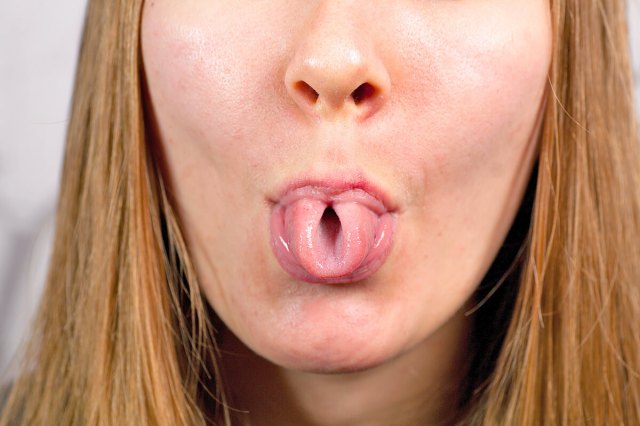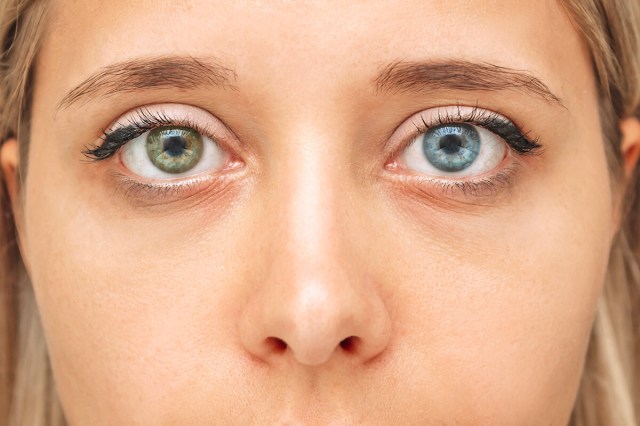
Tongue Curling
Around 65% to 81% of people can roll up the sides of their tongue to form a tube-like shape. Tongue curling was once believed to be a genetic trait, passed down through dominant genes — meaning if one parent could do it, there was a good chance their child could, too. Once used in classrooms as an example of a simple genetic trait, tongue curling has been suggested by recent studies to only be partially genetic and that environment may also play a role, as some people can learn to curl their tongue over time even if they couldn’t do it instinctively.

Widow’s Peaks
A widow’s peak is a V-shaped point in the hairline at the center of the forehead. This genetic trait got its name in 17th-century England, when it was believed (inaccurately) to be a harbinger of early widowhood. Influenced by dominant genes and passed down from parent to child, a widow’s peak is not the same thing as a receding hairline, which is a genetic trait that occurs with age. Widow’s peaks are seen in both men and women, and while different studies have reported varying numbers, one 2021 study in Japan found that 29.6% of women and 32.8% of men possessed the distinctive hairline feature.

Facial Dimples
Facial dimples, which can be present in the cheeks and/or chin, are generally an inherited genetic trait passed down through dominant genes, though some people may still have them without a family history. Cheek dimples develop as a result of variations in facial muscle structure; they can be present on one or both cheeks and their prominence can vary over the course of a person’s life. Chin dimples, also known as cleft chins, are indentations in the middle of the chin that are caused by the improper fusion of the lower halves of the jawbones. Globally, around 20% to 30% of people have facial dimples, with cheek dimples more common among women and chin dimples more common among men.
More Interesting Reads

Morton’s Toe
Morton’s toe, named for the American orthopedic surgeon Dudley Joy Morton, who first described the condition in the early 20th century, is a trait in which the second toe is longer than the big toe. It’s often genetic, caused by the relative lengths of the bones in the foot. A study of American college students found that 42.2% of participants had longer second toes, with 45.7% of men and 40.3% of women reporting the trait. Other studies around the world report a wide range of prevalence, from just 3% in one Swedish study to a whopping 90% in a study of the Indigenous Ainu population of Japan.

Hitchhiker’s Thumbs
Also known as flexible thumb or hypermobile thumb, hitchhiker’s thumb is a condition in which the thumb can bend backward at a greater angle than normal, typically more than 50 degrees. A 1953 study determined hitchhiker’s thumb to be a recessive genetic trait related to variations in the anatomy of the thumb joint and its surrounding ligaments. Hitchhiker’s thumb isn’t typically painful and doesn’t inhibit the use of the hands. There aren’t many studies about the prevalence of this trait, but researchers who conducted the study in 1953 determined that between 24.7% and 35.6% of people in the United States have this trait.

Heterochromia
Heterochromia is the technical name for when a person has two different-colored eyes or different colors within the same eye. The trait can be genetic, often caused by variations in melanin distribution, or it can result from an injury, illness, or even certain medications such as those used to treat glaucoma. While the trait is more commonly seen in certain animals including cats and dogs, around 1% of the human population has some form of heterochromia, with complete heterochromia (two distinctly different-colored eyes) being the rarest type.












